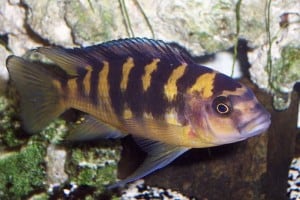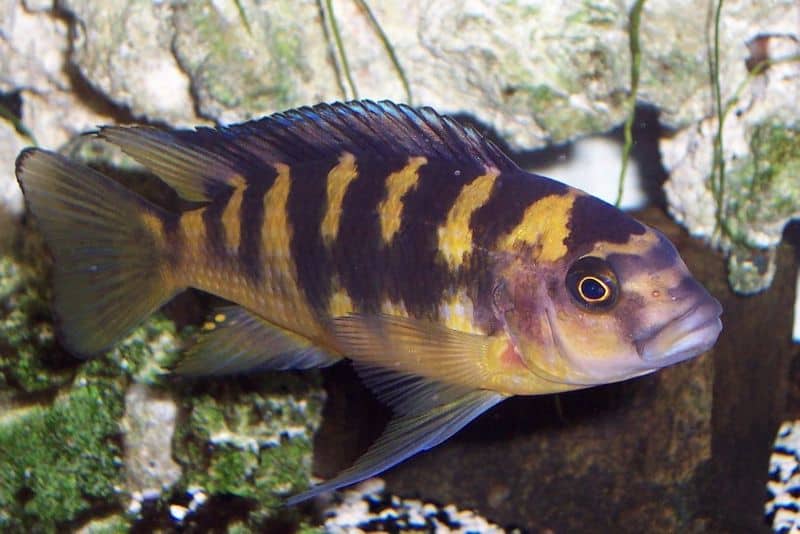
Common Name: Bumblebee Cichlid, Hornet Cichlid, Chameleon Cichlid
Scientific Name: Pseudotropheus Crabro
Average Adult Fish Size: 6 inches / 15.2 cm
Place of Origin: Lake Malawi
Typical Tank Setup: Rocky Malawi tank
Recommended Minimum Aquarium Capacity: 120 Litres
Compatibility: Combine with other mbuna species, not overly aggressive
Temperature: 23-28 Deg C / 73-82 Deg F
Water chemistry: pH 7.6-8.6
Feeding: Small crustaceans and insect larvae, will accept most aquarium foods. More omnivorous than many mbuna, but the diet should still include a vegetable component.
Sexing: Males tend to be darker and larger, especially when more mature.
Breeding: Mouthbrooder. There is no defined territory for spawning. For best results in spawning, the males should be kept with at least three females. The female will spawn on a flat rock and will take the unfertilised eggs into her mouth and will follow closely behind the male until he releases the sperm to fertilize the eggs. The female will tend to the eggs for approximately three weeks before releasing the fry. The fry can then be fed newly hatched brine shrimp, daphnia, or crushed flake food.
Additional Information: The crabro lives in large caves together with a large, bagrid catfish, the Kampango. The crabro can change its colour very rapidly from Black to the attractive gold barred “bumble bee” look. It does that, because while barred, the catfish tolerates Ps. crabro to pick parasites from its skin. The catfish are also cave spawners, exuding thousands of eggs which make a tasty snack for Ps. crabro. When the catfish spawns, Ps. crabro quickly turns murky black colour to steal the eggs. They then quickly change back to the “safe” barred configuration.


Related Posts
Croaking Gourami – Trichopsis vittatus
Paradise Fish – Macropodus opercularis
Schubert’s Barb – Barbus Semifasciolatus